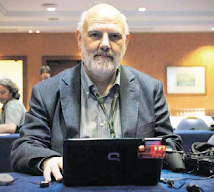
In January, the decline in food prices, clothing and transportation costs kept the consumer price index unchanged, the institute said. Core inflation rate rose 0.4 percent from December, according to the report.
The central bank last month lifted its benchmark rate to a six-year high after annual inflation in December accelerated to the fastest pace in a decade. Today's consumer prices report coupled with a separate report showing that the economy slowed in December may allow the bank to keep rates unchanged at its Feb. 7 meeting.
The central bank separately reported that the economy expanded 3.7 percent in December compared to December 2006.

In their monetary policy report published Jan. 16, the central bank cut their expectations for economic growth and said consumer prices in 2008 would rise on average 7.1 percent. Annual inflation ended 2007 at 7.8 percent, the highest since 1996.
Chile's peso fell the most in two weeks following publication of the GDP and inflation reports, since they served to dampen speculation the central bank will raise borrowing costs this week. The peso dropped 1.3 percent to 472.34 per dollar at 4:20 p.m. New York time yesterday. The peso has gained 5.2 percent so far this year, the biggest advance among a basket of 27 emerging-market currencies.
Nonethless at 6.25 percent Chile's benchmark rate remains 3.25 percent percentage points higher than the benchmark U.S. lending rate, and this is the widest gap since March 2002.












No comments:
Post a Comment